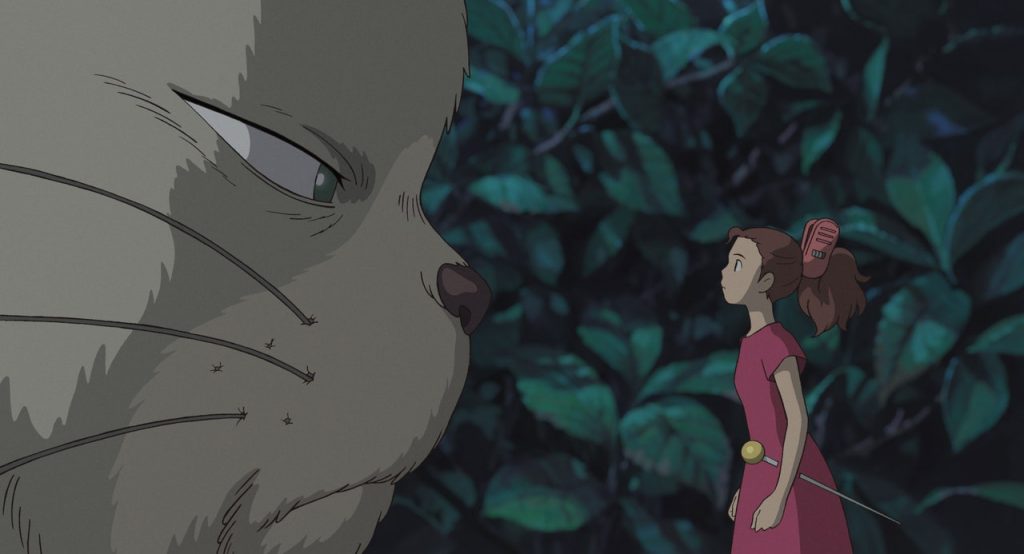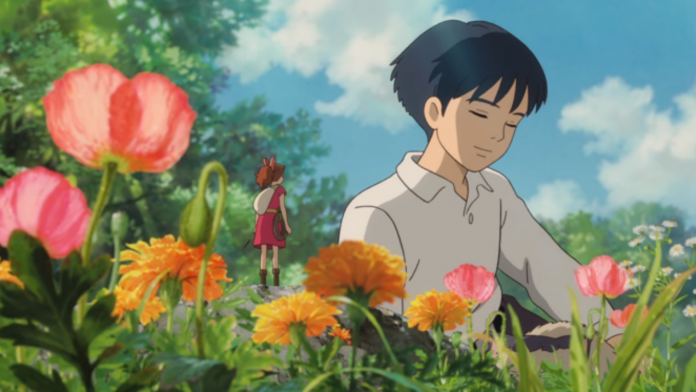17 February marks the tenth anniversary of the release of Disney’s US dub of Studio Ghibli movie The Secret World Of Arrietty (or Arrietty for short).
The film was released in Japan two years prior under the name The Borrower Arrietty and contains details that changed from the later dub, such as name changes and dialogue that would differ when translated. Adapted from the 1952 book The Borrowers by Mary Norton, the film follows a boy named Shawn who discovers the Borrowers—tiny human beings living beneath the floorboards of his great aunt’s house—and befriends Arrietty, the youngest.
In many ways, Arrietty is unchanged from her book counterpart. She’s still hot-headed and more daring than her parents, wanting to ‘borrow’ items from the humans’ dollhouse to furnish their home and growing frustrated with constraints placed by her parents in an attempt to keep her safe. She’s two years older than Sho – four years in the book, which may have been changed for greater distance between the two in terms of maturity. As many Ghibli films are (think Kiki’s Delivery Service, Howl’s Moving Castle, and Whisper of the Heart,) The Secret World of Arrietty is very much a coming-of-age story, and it makes sense for both characters to be at the beginning of adolescence. In her 2003 introduction to the book, Puffin editor Julia Eccleshare said “(Arrietty’s story) is a story of adolescent rebellion and yearning that is as intense as her human counterparts’, despite her small scale.”

Among its other themes, The Borrowers story is about how Borrowers and humans (‘beans’, as the film calls them) are more similar than either of them initially think. That being said, the film bridges the gap between the two worlds even more efficiently than the book. While Sho’s sense of privilege in how nonchalantly he talks about the Borrowers’ potential extinction is acknowledged, he is also given more reasons to relate to the Borrowers. With his book counterpart being merely an often-sickly child, the film’s Sho has a heart condition and upcoming surgery that will likely be unsuccessful.
In this way, he is living on just as much of a knife-edge as the Borrowers, and can better understand their plight. The knowledge of how uncertain a continued survival is humbles him and allows him to empathise. While Arrietty finds her courage in growing up and learning to borrow like her father, Sho finds his in coming to terms with the looming prospect of his surgery. The Borrowers are the ones who inspire him to feel ready for this, meaning the film builds upon its’ source material by giving the two protagonists parallel stories of ‘growing up’.
The coming-of-age theme of the original book may be what made it such prime material for a Ghibli movie, as it is shared among many of the studio’s films. The Secret World of Arrietty also portrays other themes with some of its predecessor films; the concept of the loneliness of extinction—and by extension environmentalism—is also found in Princess Mononoke, alongside a protagonist caught between two vastly conflicting worlds. Arrietty also isn’t the first Ghibli film to be adapted from a book, as Howl’s Moving Castle and Kiki’s Delivery Service were also built on literary source material. The studio has a reputation for adding even more depth to the stories it draws from, containing positive changes while remaining faithful to their source material. While The Secret World of Arrietty is no exception to the former, there are some differences between the Japanese and American dubs.
A glaring one is the westernisation of some names—Shawn’s name is Sho in the Japanese version, and his great aunt’s name is Sadako rather than Jessica. This is not to increase faithfulness to the book, as the novel characters also have different names, leaving the reason for the change unclear. The most significant change, however, is the addition of a final monologue, in which Sho returns to the house a year after the Borrowers have left it.
In the Japanese version, this final monologue isn’t present, leaving viewers uncertain as to the fates of Sho or the Borrowers. This is perhaps more faithful to the original Borrowers book, in which it is never clearly stated if the Borrowers survive being driven out of the house, and even implies that the boy could have invented them out of boredom. However, the final monologue does give a more optimistic view and allows the viewer to feel content with where the story ends, perhaps proving that faithfulness is not the most important quality of the adaptation.
Ten years on, The Secret World of Arrietty still holds up as a Ghibli classic and is a suitable gateway to the Borrowers books for a new generation. There is a sense of fatigue for some surrounding films that are fast-paced and action-packed, and it’s easy to pick up on the idea that people want to see quieter stories about quieter lives. Now that the world feels larger and more hostile than it once did, its messages about learning to cope with the uncertainty of life and the search to find a sense of security are more relevant than ever. The lessons learned from Arrietty on finding your courage and trusting your sense of optimism are valuable yet hard-acquired tools, yet this film provides them.
Words by Casey Langton
Support The Indiependent
We’re trying to raise £200 a month to help cover our operational costs. This includes our ‘Writer of the Month’ awards, where we recognise the amazing work produced by our contributor team. If you’ve enjoyed reading our site, we’d really appreciate it if you could donate to The Indiependent. Whether you can give £1 or £10, you’d be making a huge difference to our small team.
